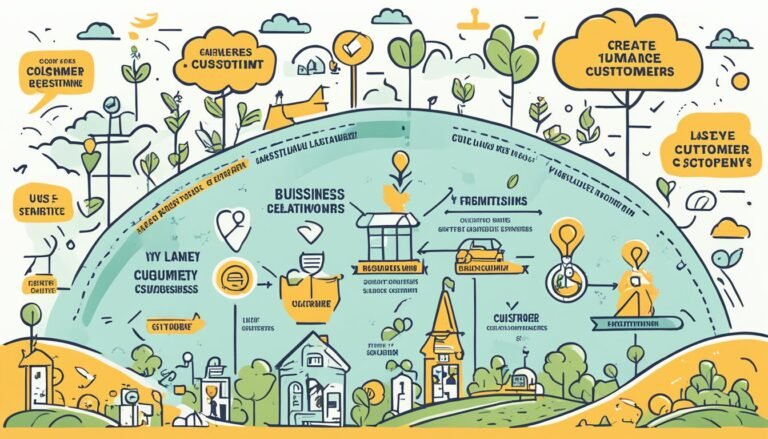From Scroll to Sale: The Rise of Social Commerce on Instagram and TikTok
What if shopping’s future isn’t in traditional online stores but in your social media feed? Platforms like Instagram and TikTok are leading the social commerce revolution. By 2023, social commerce is expected to hit $1 trillion in sales, thanks to over two billion people shopping on social platforms, says Deloitte Global. Denis Sinelnikov, CEO of Media Components and Curis Digital, notes this trend is changing how we interact with brands online.
Social media platforms are changing fast, turning the traditional e-commerce model upside down. Instagram and TikTok are leading this change with features like TikTok’s Shop and Instagram’s Shoppable Posts. These features make buying online easier than ever, letting users go from scrolling to purchasing in one click.
The rise of social commerce is more than just about making shopping convenient. It’s about using the huge user bases of these platforms to make shopping more engaging and personal. Many consumers, especially Gen Z and millennials, are now looking to social media for holiday shopping ideas. This shows a big shift in how people shop.
Companies are buying into social commerce platforms, and social media marketers are seeing direct sales within apps. This is changing the digital marketing landscape for good.
Key Takeaways
- The social commerce revolution is transforming online retail, driven by platforms like Instagram and TikTok.
- In 2023, social commerce is expected to generate $1 trillion in sales, with over two billion social shoppers.
- TikTok’s Shop and Instagram’s Shoppable Posts provide seamless buying experiences.
- Gen Z and millennials are increasingly using social media for holiday shopping ideas.
- Companies are strategically acquiring social commerce platforms, indicating the significance of social media in modern retail.
Introduction to Social Commerce
Social commerce has changed how people interact with brands on social media. It brings shopping right into the app world. What began with a simple “Shop Now” button has turned into a smooth shopping experience. This keeps users hooked while they scroll through their favorite social feeds.
Now, over 73% of people shop on social platforms. This shows a big change in how people shop online. The rise in retail ecommerce sales is expected to grow by 17% in the next two years.
TikTok leads in this e-commerce shift, with 1.5 billion users every month. It made the most money in 2023. TikTok’s “Shop” tab shows how social sites are using online retail trends. Half of TikTok users buy something after watching a TikTok Live session, showing how live shopping affects buying choices.
Instagram is also a key place for shopping, with 30% of shoppers starting their search there. Social commerce sales worldwide could hit $2.9 trillion by 2026. This shows why brands should invest in these platforms to stay relevant online.
Brands using Catalogues and Shopping Ads on Pinterest see a 15% boost in return on ad spend. Pinterest users are also willing to pay 40% more for items they find on the platform. This shows the big potential in online retail trends for brands to increase their reach and sales.
As more people shop on social platforms, businesses need to adjust their strategies. Facebook commerce is growing, adding more shoppable content to keep users interested. Snapchat is also important for reaching Gen Z in the social commerce world.
The Impact of E-commerce Trends on Social Media Platforms
Social media platforms have seen big changes thanks to e-commerce trends. Social commerce is now a key way for customers and brands to connect. Big names like Facebook, Instagram, and YouTube use their huge user bases to boost social commerce. This has led to huge growth for brands.
Dollar Shave Club became famous with funny YouTube videos that spread like wildfire. Gymshark used great visuals and worked with influencers on Instagram to get more people engaged and buying. These stories show how social commerce can really work in the digital world.
- Glossier talks with customers on Instagram and TikTok, answering questions and doing fun stuff.
- Sephora uses Instagram Shopping to let people look at makeup and buy it right from the app, which has helped sales go up.
- Warby Parker’s virtual try-on on Facebook Shops makes customers happier and means fewer returns.
- Allbirds uses Facebook Ads to reach people who care about the planet, helping them market better.
TikTok and YouTube now make shopping easy with features that let you buy things right in the app. This shows how the digital market is changing and affecting how we shop. TikTok Shop, which started in September 2023, makes buying things online even easier in the U.S. and U.K.
Social media analytics tools are key for brands to check and improve their social commerce plans. They help brands make the most of their online presence. For example, 63% of people between 18 and 25 bought something after seeing it on social media last year. This shows a big chance for brands to grow online.
As e-commerce trends keep changing, social media will play an even bigger role. They will be key to how we connect with brands and engage with each other online.
How TikTok and Instagram Are Leading the Social Commerce Revolution
TikTok and Instagram have changed the game in social media marketing. They’ve made it easy for users to go from discovering content to buying products. Let’s explore how these platforms are leading the charge in social commerce.
Integration of Shopping Functionalities
TikTok and Instagram stand out thanks to their shopping functionalities. With features like Instagram Shopping and TikTok Shop, users can shop right from the app. This has made shopping smoother and given brands a direct way to connect with customers. As social commerce grows, these features will become key for marketing.
Algorithm-driven Content Distribution
What makes TikTok and Instagram great for shopping is their smart content discovery algorithms. These algorithms show users products they might like based on what they watch and like. This makes shopping more enjoyable and helps brands reach the right people. In the U.S., people spend a lot of time on social platforms, thanks to these algorithms.
The Role of Dynamic Creator Communities
On TikTok and Instagram, creator communities add life to social commerce. Creators and influencers help promote products in a real way. Their followers trust them, which makes brands more appealing. This helps the creator economy thrive, connecting brands with a wide audience. Younger shoppers, who make up most U.S. social buyers, are especially influenced by these communities.
In summary, TikTok and Instagram are changing social commerce with their shopping tools, smart algorithms, and creator communities. As these trends grow, brands will find new ways to reach people and improve online shopping.
Influencer Marketing: The Key Driver of Social Commerce
Influencer marketing is a big deal on platforms like TikTok and Instagram. It shows how these platforms boost influencer-driven sales. By the end of this year, social shopping is expected to hit $45.7 billion. This growth shows how brand-endorser collaborations work well in turning followers into buyers.
About 36% of U.S. internet users bought something on social media in 2021. Facebook was the top platform for these sales. This fact shows how influencers play a big role in what people buy. Half of people aged 18 to 34 bought something through social media, thanks to influencers’ honest advice.
Brands use influencers to stand out and connect directly with customers. This use of content creator influence is seen in how much money influencers make. For example, Instagram influencers made about $2,970 a month in 2021. Those with over 1 million followers made up to $15,356 a month. These figures show the big money in influencer-driven sales.
The effect of brand-endorser collaborations goes beyond just money. Over two-thirds of big influencers and nearly half of smaller ones earn from their social media. Micro-influencers, with their engaging content, have a big impact on sales. They connect deeply with their followers.
Social commerce sales grew by 33% each year from 2019 to 2021. This shows social commerce is here to stay. About 5% of all U.S. eCommerce sales went through social platforms, proving the power of influencer marketing.
In conclusion, influencer marketing is key to social commerce today. It creates content that speaks to people and turns viewers into loyal customers. This growth and impact show why brands should use influencer marketing to get results.
Shoppable Posts: Changing the Way Users Buy Products
Shoppable posts on platforms like Instagram and TikTok are changing how we shop online. They bring shopping right into social apps, making it easy to buy products without leaving the app. This makes shopping online more fun and convenient, leading to more impulse buys and happier customers.
Instagram Shoppable Posts
Instagram has made shopping easy with shoppable posts. Businesses can add tags to their posts, turning them into shopping experiences. Over 130 million Instagram users now tap on shopping posts every month, showing how powerful this feature is.
These posts aim to increase user interaction and simplify the buying process. They make shopping online as easy as possible.
TikTok Shop Features
TikTok Shop is a new way to shop on social media. Users can find products through video ads, catalog ads, and live shopping. This turns TikTok into a marketplace, offering a new way to shop.
TikTok’s e-commerce tools make shopping easy and fun. This leads to more people buying things on a whim, opening up new chances for businesses.
User-Generated Content and Its Significance
User-generated content (UGC) is very powerful in social commerce. When people share their experiences with a brand, it deeply affects what others decide to buy. In fact, almost 80% of people say UGC makes them more likely to buy something.
Brands like Glossier and Patagonia use UGC well. They ask customers to share their stories about the products. This builds trust and creates a community feeling around the brand. About 90 percent of consumers look for authenticity when shopping, showing how important real experiences are.
Companies that focus on being real and use UGC grow a lot. With 61% of consumers trusting influencers more than brands, using UGC is key. This kind of content connects with people deeply, leading to more engagement and loyalty.
To make the most of UGC, brands should make it easy for customers to share their stories. Offering rewards like discounts can encourage people to post positive reviews. But, it’s important to stay true to the brand to keep the content believable and trustworthy.
In conclusion, UGC is crucial in social commerce. It helps build trust and affects what people buy. By using UGC, brands can grow a loyal community and succeed in the digital world.
The Role of Micro-Influencers in Social Commerce
Micro-influencers play a big role in social commerce, especially when targeting specific groups of people. With over 110 million Americans now buying things online and global sales expected to hit $2.9 trillion by 2026, their impact is huge. They’re known for their realness in ads and building strong bonds with their fans.
Engaging with Niche Audiences
Brands like Gymshark use micro-influencers to reach certain parts of the market. This strategy works well because these influencers have a loyal group of followers who trust them. Social media shows that 36% of users find new products through these influencers, making them a powerful and affordable way to connect with customers.
Building Authentic Connections
Micro-influencers are great at making real connections with their followers. They don’t just show products; they share stories that people can relate to. With 1 in 3 Gen Zers buying from brands started by influencers, these real interactions can lead to more engagement and sales.
Working with micro-influencers lets brands connect with active communities. As 47% of marketers say their influencer partnerships worked well, the benefits are clear. Whether it’s on Instagram or TikTok, being seen through micro-influencers can increase visibility and trust, helping brands succeed in social commerce.
Exploring Different Social Commerce Platforms
Global e-commerce sales are expected to hit $1.6 trillion in three years. Platforms like Instagram and TikTok are leading the charge in social commerce. They offer many strategies for brands to grow their online presence.
Pinterest is a key player. It has 48% of users who focus on shopping. This platform uses visuals to inspire buying, offering a special space for brands. Brands can turn products into Shoppable Pins, making it easy for users to buy right on Pinterest.
Facebook is also a big name, reaching 81% of shoppers who look for products on social media. It has many shopping tools. For example, Warby Parker uses Facebook Shops’ virtual try-on feature to improve shopping for eyewear, combining tech with social interaction.
Amazon’s GlowRoad is a new player in social commerce. By adding this platform, Amazon is mixing social features with traditional e-commerce. This approach offers a new way to engage with customers and make buying easy.
Creating a strong social commerce strategy means knowing the different platforms. Brands need to pick the right ones and use their unique features well. This could mean using Instagram’s influencer model or TikTok’s engaging videos to boost sales.
In conclusion, choosing the right platforms and using their shopping tools well is key for brands. With sales on social media expected to almost triple by 2025, using social commerce diversity is vital.
Live Selling: A Growing Trend in Social Commerce
Live selling has become a big deal in social commerce. It connects brands and consumers in a fun, real-time way. Instagram and TikTok love this method, letting sellers host live events to sell products and services.
This approach makes shopping exciting and immediate. It’s like watching home shopping networks but online. It makes customers feel like they’re part of something special.
The Rise of Live Selling on Instagram
Instagram leads in live selling events. It’s a hit with young US buyers, with 28% of them making purchases there. This shows Instagram knows how to keep its audience engaged.
Brands and influencers use Instagram Live to show off products and talk to customers live. It’s a way to make shopping feel more personal and fun.
TikTok’s Embrace of Live Shopping
TikTok has quickly jumped on the live shopping bandwagon. With 1.9 billion users worldwide, it’s perfect for live sales. About two-thirds of TikTok users are open to buying things while on the app.
This makes TikTok a key place for brands to sell. Its smart content sharing helps live sales reach lots of people. It’s a great way for brands and creators to sell more and connect with customers.
Augmented Reality Shopping: The Future of E-commerce
Looking ahead, augmented reality experiences will change the game in e-commerce. They bridge the gap between online and real-life shopping. This lets consumers interact with products in new ways. Brands are now using immersive shopping to make shopping more engaging.
Brands use augmented reality experiences for virtual try-ons and product demos. This lets shoppers see items in their space or on themselves before buying. AR technology has boosted conversion rates, with a 30 percent increase in China through live-stream shopping.
In the US, platforms like Instagram and TikTok are leading in social commerce. Instagram has millions of businesses using it for in-app shopping. TikTok is also growing fast, especially for clothes, showing AR’s potential in shopping.
By 2025, the US social-commerce market will hit nearly $80 billion, making up 5 percent of US e-commerce. Augmented reality experiences and social media are changing how we shop. Businesses that invest in AR will lead, offering a smooth mix of online and in-store shopping.
Tapping Into Social Commerce: Strategies for Brands
Brands can reach a wide audience by embracing social commerce. A strong strategy in strategic marketing planning, targeting the right consumer targeting, and increasing social commerce engagement can greatly improve brand success.
Picking the Right Platform
Choosing the best platform is key. Instagram shows 90% of its users follow at least one business, offering great brand engagement chances. TikTok, with its Shopify integration, is also a strong choice, as 49% of its users buy things because of app ads.
Creating Engaging Product Listings
Brands should make product listings that grab attention. Short videos are very effective in social media, showing their value in telling brand stories. High-quality images and detailed descriptions help people decide to buy, as 74% of consumers check social networks for info.
Staying Updated with Social Commerce Trends
Keeping up with social commerce trends is vital for staying ahead. Social commerce shopping is expected to hit over $3 trillion globally in eight years. With 37.9% of social buyers in the U.S. by 2025, brands must keep innovating. Gen Z and Millennials have a lot of money and like to shop on social platforms, so brands need to adapt.
Using smart strategic marketing planning, targeting the right consumer targeting, and building real social commerce engagement will help brands succeed in the digital market.
From Scroll to Sale: The Rise of Social Commerce on Instagram and TikTok
In recent years, social commerce has changed how people buy things. Instagram has 2 billion users every month, making it key in social commerce. TikTok is also growing fast, especially with Gen Z shoppers, showing they buy a lot on the platform.
Social commerce is a big hit because it makes shopping easy and fun. Users can go from watching videos to buying things right in the app. This has made shopping online more effective, thanks to Instagram and TikTok.
The estimated sales globally through social media platforms reached $992 billion in 2022, and this figure is expected to grow significantly in the future.
It’s important to understand what consumers want for social commerce to keep improving. To build trust, platforms use secure databases and safe payment methods. This makes shopping online safer for everyone.
Good content is key to getting people to buy things, as seen with more U.S. shoppers doing social commerce. Brands need to pick the right platform, be active on social media, and make their websites easy to use on phones. With sales expected to hit $8.5 trillion by 2030, making these platforms better is crucial.
Conclusion
Social commerce is growing fast, with Instagram and TikTok leading the way. This industry is expected to hit $6 trillion by 2030. It shows how big the potential is for brands to use social media for shopping.
Businesses need to use social commerce insights to keep up. Influencers are key, with most marketers planning to spend more on them in 2023. These platforms, like Instagram and TikTok, have lots of users, making them important for brands.
Even with challenges like managing influencers and gaining trust, social commerce is changing the game. Brands can succeed by using these platforms well and understanding what customers want. The social commerce world is expanding quickly. Those who adapt and innovate will lead in this new retail era.
Source Links
- The Rise of Social Commerce in Retail
- 2024 Is The Year of the Rise of Social Commerce in the West
- The Rise of Social Commerce: What it means for your ecommerce brand
- Social Commerce: How to Drive Online Sales with Social Shopping
- From Scroll to Cart: Mastering E-commerce with Social Commerce Integration
- Why social commerce is transforming online retail
- Social Commerce 101: the New Shopping Revolution – Avenue Z
- The Rise of Social Commerce: Leveraging Social Media for Retailers – Counter Intelligence Merchandising
- In graphic detail: How influencers drive social commerce sales
- Why Social Commerce Should Be Part of Your Commerce Strategy
- What is Social Commerce in 2024 | Social Champ
- What is Social Commerce in 2024 | Social Champ
- Shoppable Ads: How Social Commerce Can Drive Sales | Madcraft
- The Rise of Social Commerce: Transforming the Way We Shop Online
- The Rise in User-generated Content and the Reason Behind it
- Council Post: The Rise Of Social Commerce—And How To Tap Into It
- AI Fraud Detection Will Save eCommerce Brands Billions
- Social Media’s Role in Reshaping Online Shopping, According to Retailers
- Are Influencers the Future Of Ecommerce, Or Just a Phase?
- Social Commerce: Turning Social Media into Sales Channels
- What is Social Commerce and Why Should Your Brand Care?
- Social Commerce Examples, Features, and Platforms to Uplevel Your Business (2024) – Shopify
- Trend in eCommerce – How Social Commerce is changing the game
- What Is Social Commerce? Impact, Examples & Trends in 2024
- How TikTok Has Changed Ecommerce Forever | Entrepreneur
- Social commerce: The future of how consumers interact with brands
- The Future of Online Shopping
- The Rise Of Social Commerce: Shopping, But Make It Social – NoGood™: Growth Marketing Agency
- The Ultimate Guide To Social Commerce For E-Commerce Brands On TikTok & Beyond – Justuno
- The Rise of Social Commerce: Turning Followers into Customers
- Get proactive with social commerce: Is it transformational or just a craze? – GDS Group
- Instagram vs. TikTok: Which Delivers Better Business ROI in 2024?







